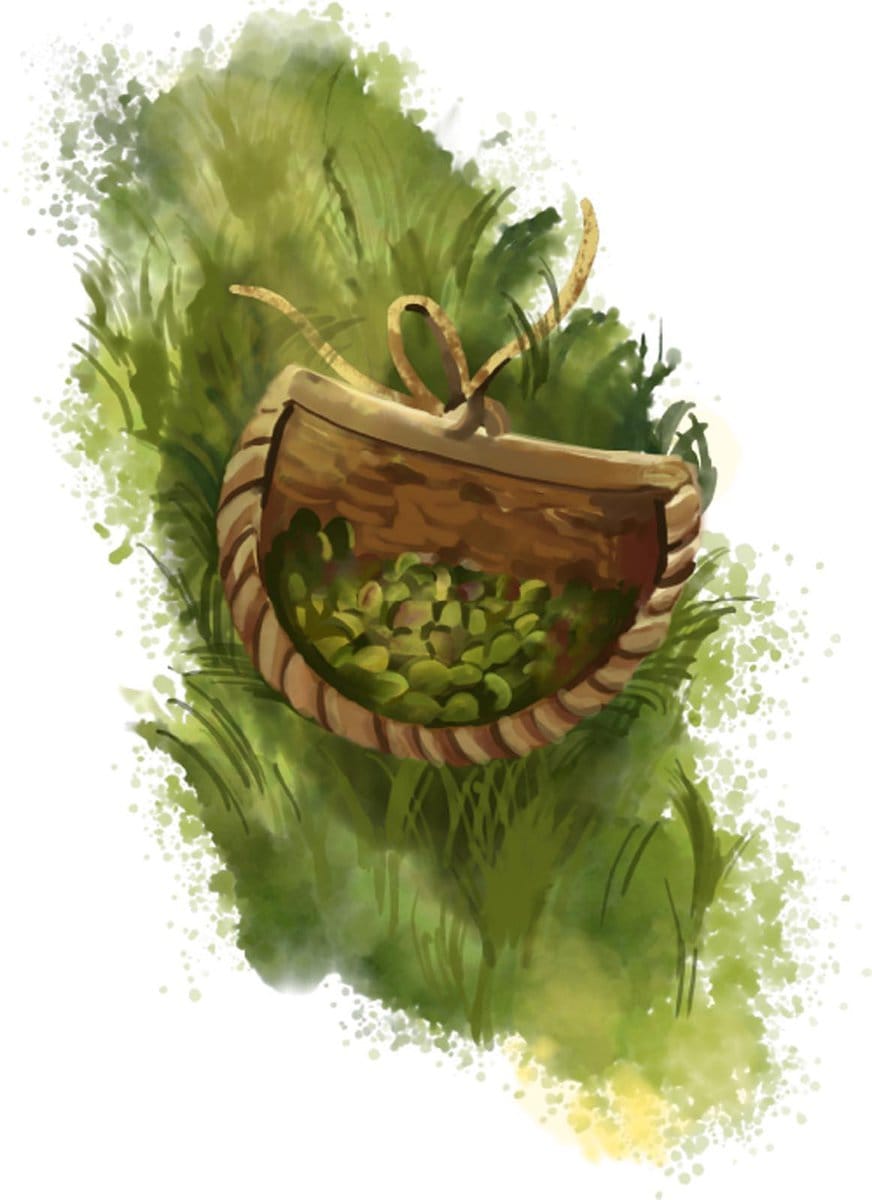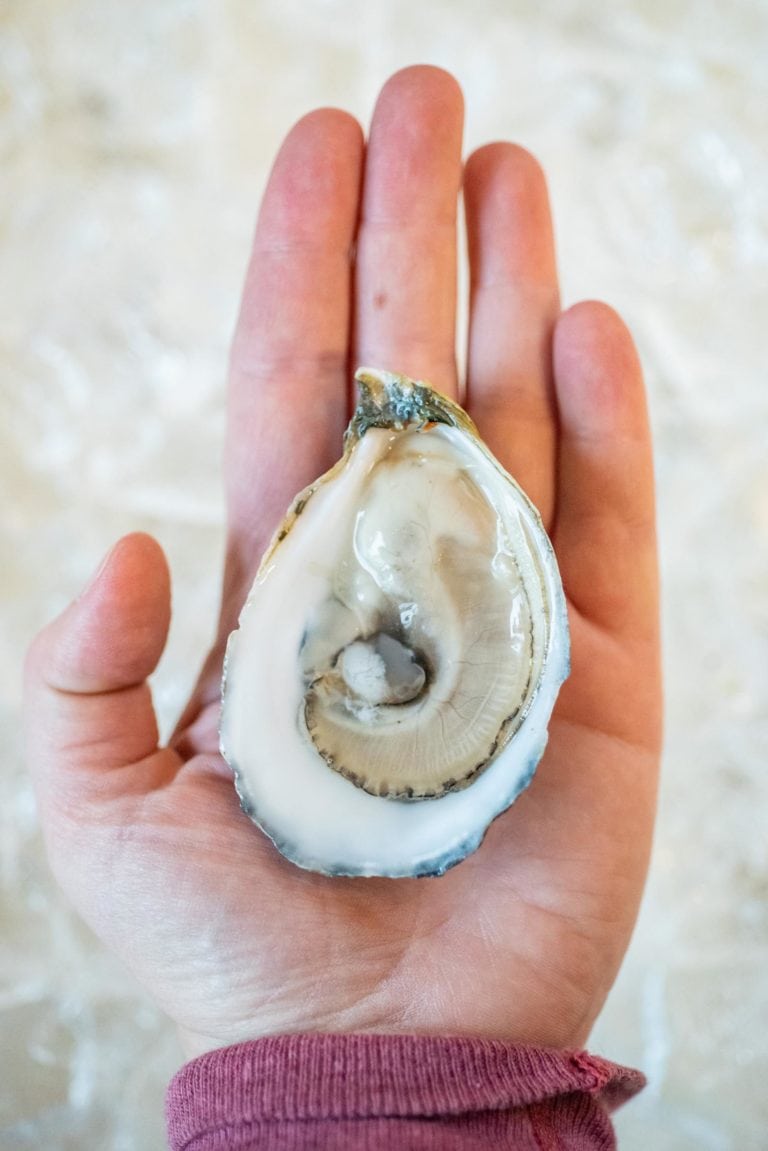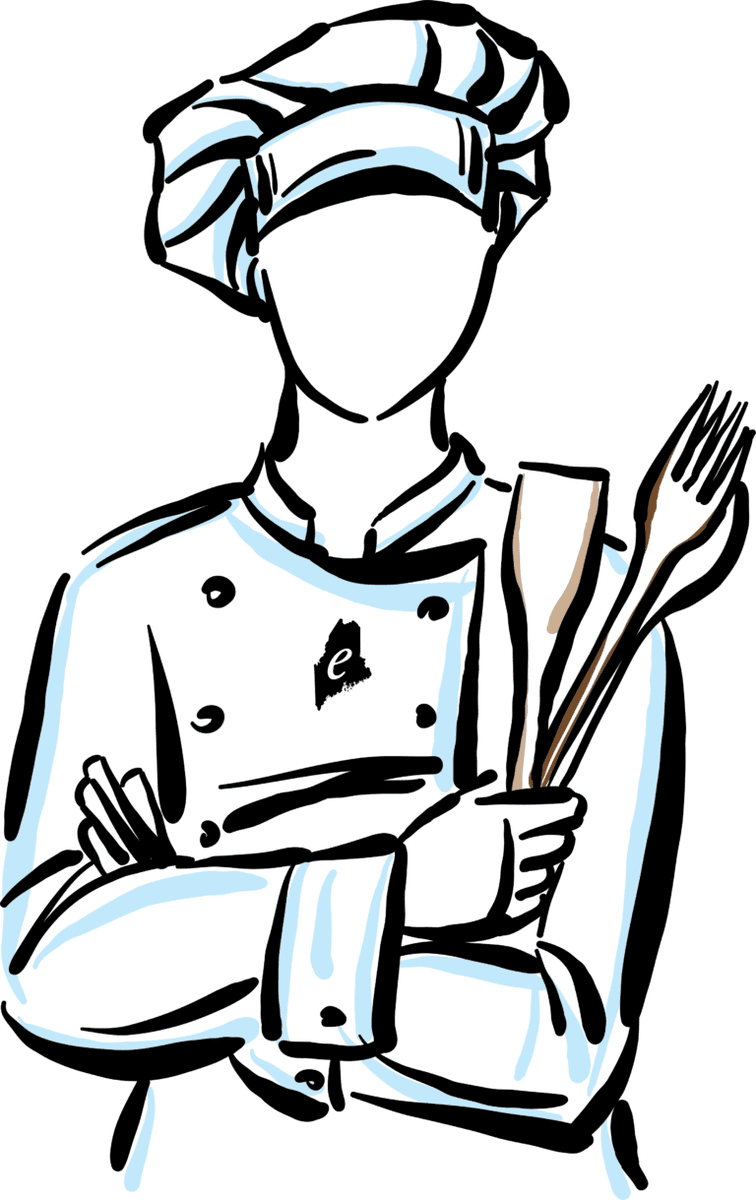I have been known to brag about my Maine credentials. I was born in Camden and can trace my Maine family back 15 generations. Truth be told, though, I was raised “away,” whisked off to Europe by my journalist parents when I was just 6 months old. I didn’t really live in the United States until I was 15.
We lived all over the Mediterranean: a year in Spain, a year in Paris, three years in Lebanon. It was a fabulous way to grow up, albeit a bit unstable. In the early 1970s my parents acquired a tumbledown stone farmhouse on 30 acres of land in the craggy mountains between Tuscany and Umbria. It sits just a few kilometers from the Etruscan hilltop town of Cortona, which is famous today but in those days was considered off the beaten track.
I’m here to tell the tale of how I came to serve olive oil from that very place at my Rockport restaurant, Nina June. At some point while owning this Tuscan farmhouse, my mother (Nancy Harmon Jenkins, renowned expert on olive oil and the Mediterranean diet) decided the best way to use the land and prevent the forest from taking it over was to plant olive trees.
Olive trees are an iconic symbol of the Mediterranean. Their gnarled branches dressed in silvery green leaves cover the countryside. They’ve been cultivated for thousands of years, the fruit picked and pressed for use as an edible fat, or as lamp oil in Roman times. More modernly, olive oil enjoys popularity as a healthy fat and, more importantly, because it is simply delicious. Olive trees continue to be farmed; barring climate disaster, they hopefully will be forever.
In 1995 my mother planted 150 olive trees on the terraces surrounding the house. The Tuscans say “you plant olive trees for your children” because they neither grow nor produce quickly. It was a decade before they gave us enough olives to press into oil. While we came away with a paltry 14 liters, all of them had the same magical, peppery taste we’d known from decades of consuming Tuscany’s prized olive oil.
As the trees have matured and become more prolific, each year my family spends an autumnal week frantically picking olives with friends and acquaintances in tow. Then we haul our crop to the mill in town, where we’ve booked a pressing time early in the season—hence the franticness, as we’ve got to have the olives all picked before then.
Picking olives, I like to say, is easy work as far as agricultural labor goes. The trees in our mountainous area are small, so most of the olives can be reached without the help of a ladder. From there, they can be easily tugged by hand off the tree and dropped into traditional wicker baskets we tie around our waists. We transfer the contents of the filled baskets into bigger plastic containers called cassettes. This method ensures the least amount of damage to the olive fruit from tree to mill.

Olive season at the mill is a festive occasion, as people stand around watching their olives go in and making sure it’s their oil that comes out. Tuscans, like Mainers, can be suspicious folks. While we wait, we talk about the season, and if it’s late enough in the day, we split a bottle of prosecco to toast the successful harvest.
The mill in town, when we first started using it, offered a traditional method of pressing the olives between large stones. In those days there would be a small fire in a corner hearth where customers grilled bread and topped it with freshly pressed oil. Enchanting as these stones look, though, they don’t produce the best oil. The stones have not been used for many years, and it’s hard to imagine they will get fired up again.
Instead, our oil is pressed using modern continuous-cycle machines that we believe yield a cleaner product. It takes just under an hour from when the olives get loaded into the presser until the process is complete. We wait, noses pressed against the glass window to watch.
We’ve had our share of bad years. Like everything else agricultural, olives are affected by climate change. Sometimes, extreme heat in May burns all the flowers off the trees. Other times, it’s so hot in July the fruits wither on the branches. And in still more growing seasons, hail knocks all the olives off just before we’re ready to pick them.
But even in good years, we’ve rarely produced more than enough olive oil for family members to use in their own kitchens. If we did have a couple extra liters, I’d take them to the restaurants I’ve owned in New York and Maine for use as part of a special olive harvest dinner.
In the fall of 2022, though, we had a bumper crop—in fact, it was so large I wasn’t sure how we were going to get all the olives picked. While I’d previously disdained the use of nets and insisted on picking and basketing the olives by hand, last year we laid down the nets and grabbed rakes to pull the olives off the trees, speed and efficiency being paramount.
After six days of harvesting with a group of about 10 pickers, we had over 1,000 kilos of olives from our grove. We pressed them with an 11% resa, the Italian measure for the yield of oil when measured against the weight of the fruit. We canned almost 110 liters of finest Tuscan extra-virgin olive oil, quivering with green and spicy flavor.
I was eager to share this flavor with customers at Nina June because it so rarely makes it to Maine. This personal import is a reconciliation of my two halves, bringing Italy into Maine in a very direct and personal way.
And Maine has embraced it. We offered a limited number of cans to customers, all of which were snapped up between Thanksgiving and Christmas. Many buyers were excited to hear about how such a simple process can produce such a complex ingredient. But we held many, many cans back for use at Nina June and should have enough to keep serving our olive oil at least through some of the busy summer season.
We primarily use our oil for bread service. But we also drizzle it over Maine diver scallops, pour it over toasted and garlic-rubbed bread, and apply it over cooked vegetables and fresh greens alike.
What’s best about having this oil in house is watching people who have never experienced fresh olive oil taste it and begin to understand why Mediterranean people love its flavor. The fact that olive oil is good for a body is a benefit, sure, but that’s not the main motivator for eating it.
Good olive oil is best when it’s first pressed because it’s vibrant and spicy. But it is also fragile, as both heat and light leach color and flavor from it. With age, it mellows. By its first birthday, if there is any left, it can get relegated to the cooking oil shelf.
But fear not: The olive trees in Italy have been pruned as I write, and are ready to grow, flower, and produce again, inshallah. This Muslim phrase, which literally means “God willing,” is one I picked up living in Lebanon. Used here, it underscores how an olive harvest is something over which I have little control. That said, if another olive oil bounty comes my way this November, I promise to share it again with my fellow Mainers.














